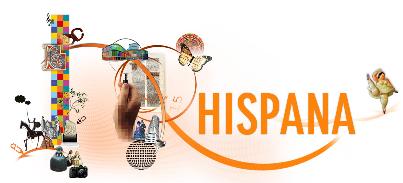Mostrar el registro sencillo del ítem
Arte terapia en pacientes pediátricos oncológicos
| dc.contributor.advisor | López Rodríguez, María del Mar | es_ES |
| dc.contributor.advisor | Alcaraz Córdoba, Tania | es_ES |
| dc.contributor.author | Argente del Castillo Pérez, Lucía | |
| dc.date.accessioned | 2021-02-19T06:40:41Z | |
| dc.date.available | 2021-02-19T06:40:41Z | |
| dc.date.issued | 2020-06 | |
| dc.identifier.uri | http://hdl.handle.net/10835/9862 | |
| dc.description.abstract | Resumen: Introducción: El cáncer infantil aumenta cada año provocando una experiencia traumática para el paciente y los familiares, además de sentimientos de inadaptación, es por ello que se utilizan técnicas alternativas para tratar muchos de los problemas que la medicina tradicional no los soluciona y, por lo tanto, que su paso por el hospital y en general la duración de su enfermedad sea lo más placentera posible. La arte terapia combina una serie de procedimientos como pintar, dibujar, esculpir o figuras hechas a mano para expresar sentimientos ayudando al bienestar físico, mental y social, traduciéndose todo esto en una mejora de la calidad de vida del paciente. Objetivos: El objetivo general del estudio fue realizar una revisión sistemática sobre la efectividad de la arte terapia en pacientes pediátricos oncológicos. Los objetivos específicos del estudio trataban de analizar si la arte terapia produce beneficios en pacientes pediátricos oncológicos en cuanto a calidad de vida, nivel de ansiedad y estrés y mejora en la comunicación. Metodología: Para realizar la revisión se utilizó la guía PRISMA, la búsqueda se realizó entre diciembre de 2019 y marzo de 2020. Las bases utilizadas fueron PubMed, Web Of Science y CINAHL, de los cuales se obtuvieron 5 artículos los cuales incluían una intervención con arte terapia en pacientes pediátricos oncológicos para obtener un beneficio. Se realizó una síntesis no cuantitativa de los datos extraídos. Resultados: En los resultados obtenidos, se observan beneficios gracias al uso de la arte terapia en pacientes pediátricos oncológicos obteniendo una mejora en la comunicación, en la salud general del niño, una disminución de la ansiedad, estrés y menor sensación de dolor ante procedimientos. Conclusiones: Se considera que se obtienen beneficios al realizar arte terapia en pacientes pediátricos oncológicos como técnica alternativa pero, cada uno de ellos utiliza diferentes técnicas y herramientas para recoger los datos por lo que dificulta la generalización de los resultados. Abstract: Introduction: Childhood cancer increases every year causing a traumatic experience for the patient and family members, in addition to feelings of maladjustment. That is why alternative techniques are used to treat many of the problems that traditional medicine does not solve and, therefore, the stay in the hospital and in general the duration of the illness is as pleasant as possible. Art therapy combines painting, drawing, sculpting, handmade figures, etc. ... to express feelings, helping physical, mental and social wellbeing, translating all of this into an improvement in the quality of life of the patient. Objectives: The general objective of the study was to carry out a systematic review on the effectiveness of art therapy in pediatric cancer patients. The specific objectives of the study were to analyze whether art therapy produces benefits in pediatric cancer patients in terms of quality of life, level of anxiety and stress, and improvement in communication. Methodology: The revision was carried out using the PRISMA guide, the search was carried out between December 2019 and March 2020. The bases used were Pubmed, Web Of Science and CINAHL, from which 5 articles were obtained which included an intervention with art therapy in pediatric oncological patients to obtain a benefit. A quantitative synthesis of the extracted data was made. Results: In the results obtained, benefits are observed thanks to the use of the art therapy in pediatric oncology patients obtaining an improvement in communication, in the general health of the child, a decrease in anxiety, stress and less pain from procedures. Conclusions: Benefits are considered when performing art therapy in pediatric oncology patients as an alternative technique but each of them uses different techniques and tools to collect the data making it difficult to generalize the results | es_ES |
| dc.language.iso | es | es_ES |
| dc.rights | Attribution-NonCommercial-NoDerivatives 4.0 Internacional | * |
| dc.rights.uri | http://creativecommons.org/licenses/by-nc-nd/4.0/ | * |
| dc.subject | Trabajo Fin de Grado de la Universidad de Almería | es_ES |
| dc.subject | arte terapia | es_ES |
| dc.subject | niños | es_ES |
| dc.subject | cáncer infantil | es_ES |
| dc.subject | terapias alternativas | es_ES |
| dc.subject | tratamiento | es_ES |
| dc.subject | art therapy | es_ES |
| dc.subject | children | es_ES |
| dc.subject | childhood cancer | es_ES |
| dc.subject | alternative therapies | es_ES |
| dc.subject | treatment | es_ES |
| dc.title | Arte terapia en pacientes pediátricos oncológicos | es_ES |
| dc.title.alternative | Art therapy in pediatric oncology patients | es_ES |
| dc.type | info:eu-repo/semantics/doctoralThesis | es_ES |
| dc.rights.accessRights | info:eu-repo/semantics/openAccess | es_ES |










